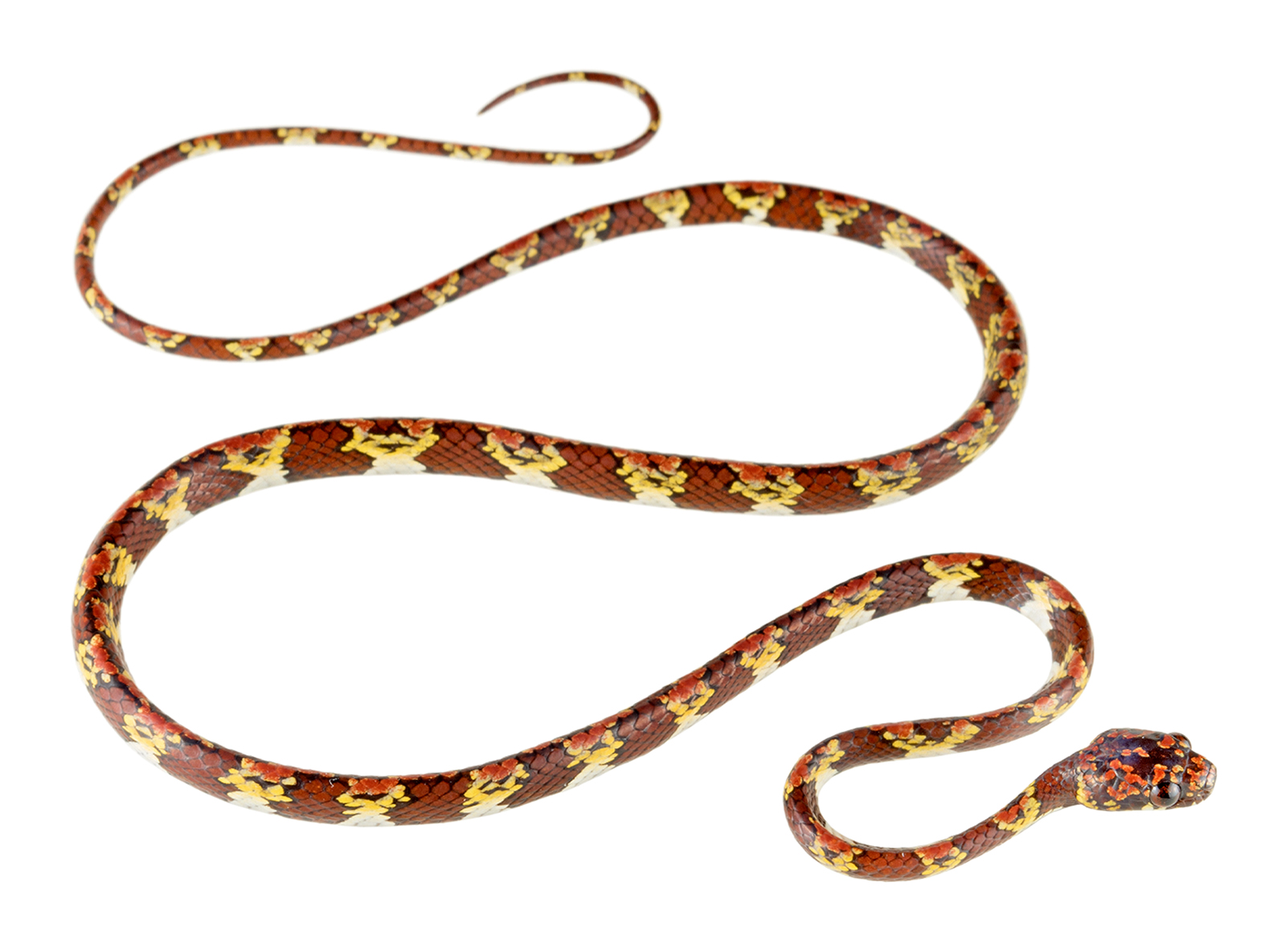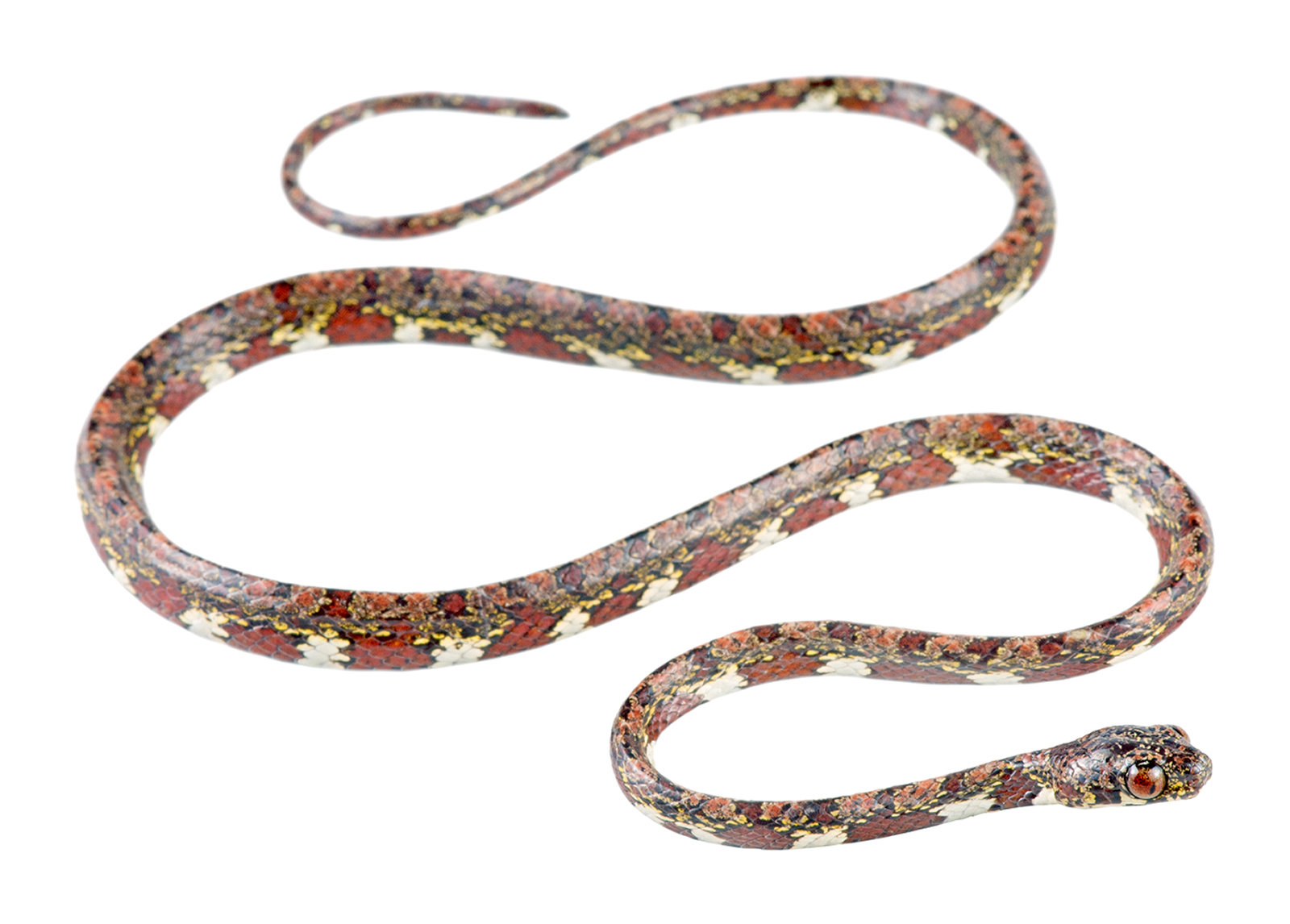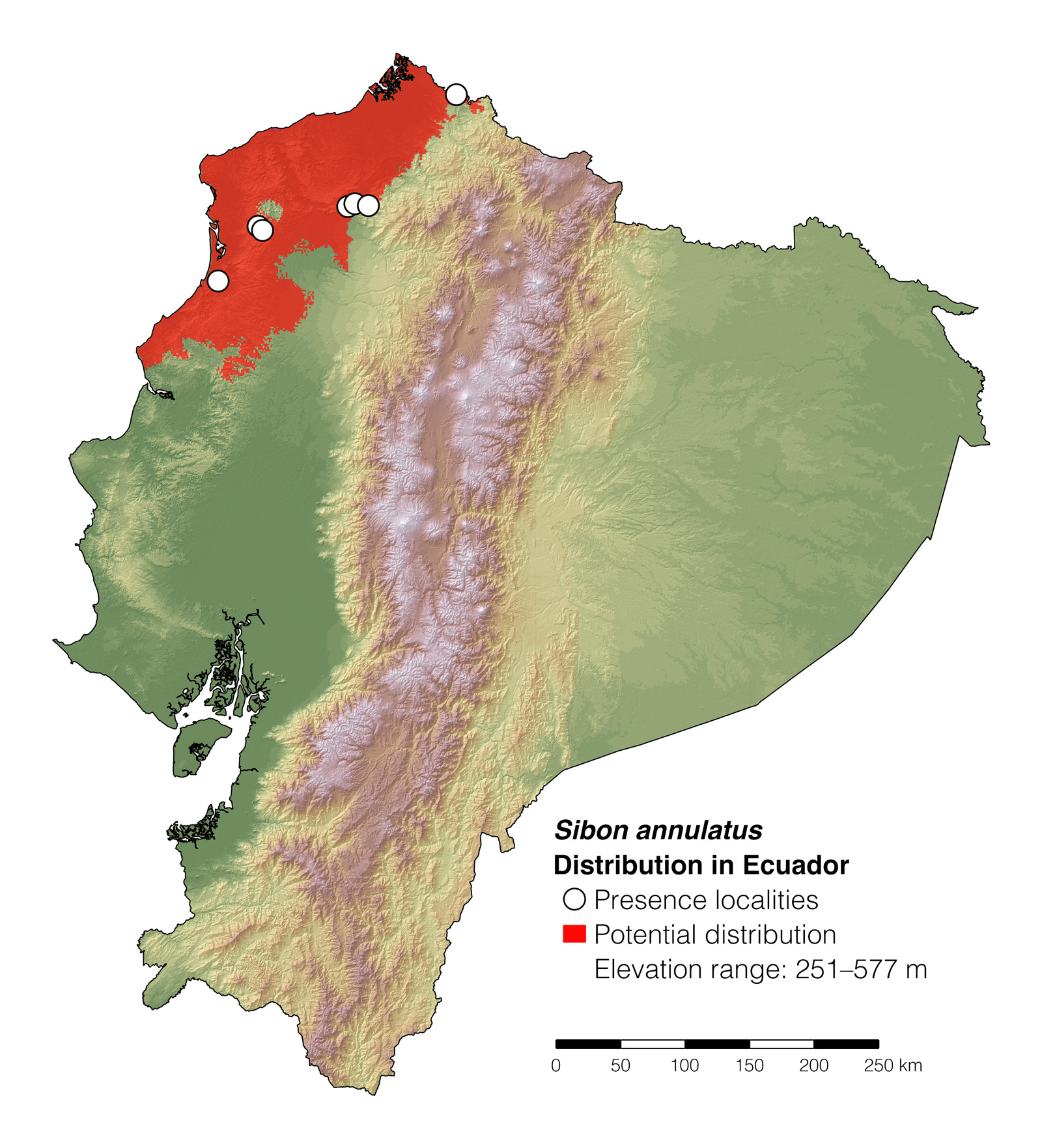Ringed Snail-Eater |
Reptiles of Ecuador | Serpentes | Colubridae | Sibon | Sibon annulatus
English common names: Ringed Snail-Eater, Ringed Snail-Sucker, Banded Snail-Eater.
Spanish common names: Caracolera anillada, caracolera de anillos rojos.
Recognition: ♂♂ 73.3 cm ♀♀ 57.6 cm. In northwestern Ecuador, The Ringed Snail-Eater (Sibon annulatus) is the only snake having the head much wider than the neck, bulging eyes, and a “christmas” color pattern consisting of an olive to green dorsum with 40–74 reddish rings or blotches on the body and tail. The Cloudy Snail-Eater (S. nebulatus) has a similar body form, but the dorsum of this other species is grayish.
Picture: Adult male from Canandé Reserve, Esmeraldas, Ecuador. | |
 | |
Picture: Adult from Nuquí, Chocó, Colombia. | |
 | |
Natural history: Extremely rare in Ecuador but frequent in other parts of its range (for example in Central America). Sibon annulatus is a nocturnal snake that inhabits old-growth to moderately disturbed evergreen forests, usually close to bodies of water.1 Ringed Snail-Eaters are active at night, especially if it is raining or drizzling.2 They move actively but slowly at ground level, or on vegetation up to 6 m above the ground.2,3 They feed mostly (58.8%) on slugs and snails, but also (41.2%) on earthworms.1,4 Ringed Snail-Eaters are harmless to humans; they are extremely docile and never attempt to bite. If threatened, individuals may produce a musky and distasteful odor.2 Aggregations of three individuals of S. annulatus (one female and two males), presumably related to mating and feeding, have been reported.1 Sibon annulatus breeds throughout the year.5 Females lay clutches of 2–9 eggs in the forest floor.6
Conservation: Least Concern.7 Sibon annulatus is listed in this category because the species is widely distributed, frequently encountered in some parts of its range, and is considered to be facing no major immediate extinction threats.7 In a rainforest locality in Panamá, the occurrence rates of S. annulatus have actually increased by a factor of three in the period from 2006 to 2012.8 However, the body condition of the individuals in this locality declined following the collapse of amphibian populations due to chytridiomycosis.8 Despite being listed as Least Concern, the species faces the threat of habitat loss and direct killing.6
Distribution: Sibon annulatus is native to the Mesoamerican lowlands and adjacent mountain foothills from northern Honduras to western Panamá, as well as the lowlands of the Chocó and Río Magdalena valley regions from eastern Panama to northwestern Ecuador. In Ecuador, the species occurs over an estimated 20,000 km2 area.

Etymology: The generic name Sibon is probably derived from the Latin word sibonis (a kind of “hunting spear”).9 It may refer to the shape of the head in this group of snakes. The specific epithet annulatus comes from the Greek words annulus (meaning “ring”) and the suffix -atus (meaning “provided with”).10
See it in the wild: Ringed Snail-Eaters can be seen with ~1–2% certainty at night, especially after a rainy day, in Canandé Reserve and Bilsa Biological Reserve. The best way to detect the snakes is by scanning low vegetation along trails.
Special thanks to Kit Sheffield for symbolically adopting the Ringed Snail-Eater and helping bring the Reptiles of Ecuador book project to life.
Click here to adopt a species.
Author: Alejandro ArteagaaAffiliation: Fundación Khamai, Reserva Arlequín, Ecoruta Paseo del Quinde km 56, Santa Rosa de Mindo, Pichincha 171202, Ecuador.
Photographers: Jose VieiraaAffiliation: Tropical Herping (TH), Quito, Ecuador.,bAffiliation: ExSitu, Quito, Ecuador. and Sebastián Di Doménico.
How to cite? Arteaga A (2020) Sibon annulatus. In: Arteaga A, Bustamante L, Vieira J (Eds) Reptiles of Ecuador: Life in the middle of the world. Available from: www.reptilesofecuador.com
Literature cited:
- Lewis TR, Griffin RK, Grant PBC, Figueroa A, Ray JM, Graham KE, David G (2013) Morphology and ecology of Sibon snakes (Squamata: Dipsadidae) from two Neotropical forests in Mesoamerica. Phyllomedusa 12: 47–55.
- Field notes, Reptiles of Ecuador book project.
- Lewis TR, David G, Grant PBC, LaDuke TC, Ryall C (2010) Sibon annulatus (ringed snail-eater). Maximum size. Herpetological Review 41: 98.
- Ray JM, Montgomery CE, Mahon HK, Savitzky AH, Lips KR (2012) Goo-eaters: diets of the Neotropical snakes Dipsas and Sibon in Central Panama. Copeia 2012: 197–202.
- David G, Lewis TR (2011) Hatching neonates of Sibon annulatus (Günther, 1872) in a Manicaria swamp forest, Costa Rica. Herpetology Notes 4: 269.
- Meneses-Pelayo E, Echavarría-Rentería JD, Bayona-Serrano JD, Caicedo-Portilla JR, Rengifo-Mosquera JT (2018) Sibon annulatus (Günther, 1872). Catálogo de Anfibios y Reptiles de Colombia 4: 70–77.
- Acosta Chaves V, Batista A, García Rodríguez A, Vargas Álvarez J (2013) Sibon annulatus. The IUCN Red List of threatened species. Available from: www.iucnredlist.org
- Zipkin EF, DiRenzo GD, Ray JM, Rossman S, Lips KR (2020) Tropical snake diversity collapses after widespread amphibian loss. Science 367: 814–816.
- Lee JC (1996) The amphibians and reptiles of the Yucatán Peninsula. Comstock Publishing Associates, Ithaca, 500 pp.
- Brown RW (1956) Composition of scientific words. Smithsonian Books, Washington D.C., 882 pp.